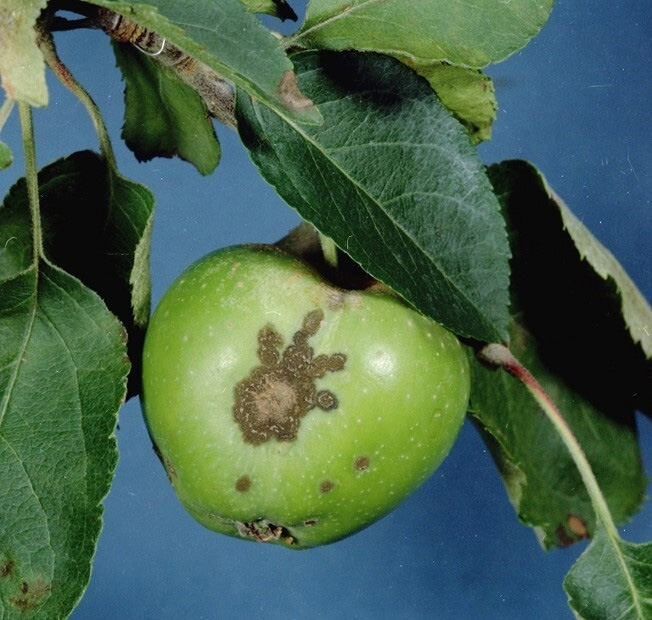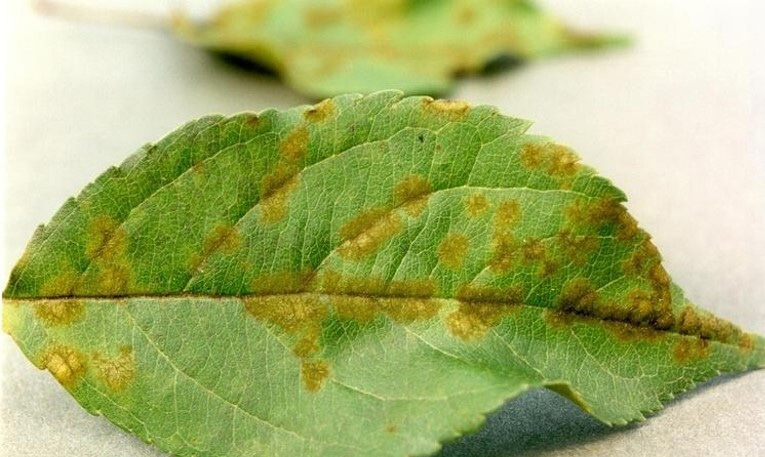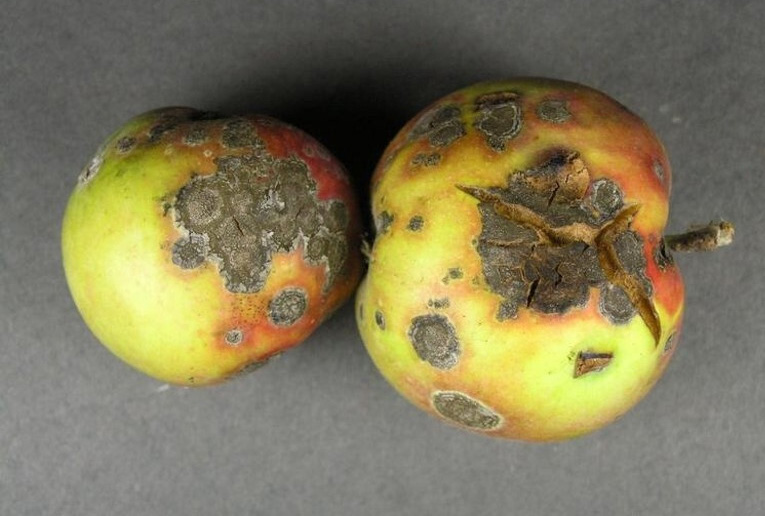Apple Scab (Scientific Name of Pathogen: Venturia inaequalis - Fungus)
Hosts:

Figure 1: Apple scab lesions on apple fruit. Photo by Clemson University, Bugwood.org.
Apple and crabapple trees
Damage/symptoms:
Round, olive-green leaf spots with fringed borders appear on leaves in late spring. Spots on fruits can also appear. Leaf spots turn brown to black with age. Affected leaves turn yellow and may drop mid-summer. Infected fruits develop corky tissue and may become deformed and cracked.
Disease cycle:

Figure 2. Apple scab lesions on apple leaf. Photo by Bruce Watt, University of Maine, Bugwood.org
The apple scab fungus overwinters in infected leaf debris on the ground. In spring, spores are produced on the leaf debris and dispersed by wind and rain and infect new leaves. Infection is most severe under wet conditions. Secondary infections occur throughout the growing season when spores are produced on the newly developed leaf spots which infect adjacent leaves. The secondary infections are more severe under warm and moist conditions
Management:

Figure 3: Apple scab lesions and cracks expanding on apple fruits. Photo by Bruce Watt, University of Maine, Bugwood.org.
Plant apple scab-resistant cultivars whenever possible. The key to control apple scab is to prevent the primary infection in spring. Therefore, remove and destroy fallen, infected leaves in fall to reduce the level of inoculum in the following spring. Avoid wetting the foliage for prolonged times during the growing season. Prune trees to optimize air circulation. Fruit trees can be treated before becoming infected with protectant fungicides in 7 to 10 day intervals starting from green tip stage until petal fall. Products with the active ingredients chlorothalonil, myclobutanil, copper, or lime-sulfurare effective in controlling this disease. Strictly follow instructions on the pesticide labels.
By Eva Grimme, MSU Associate Extension Specialist III. February 2024. For more information,
contact diagnostics@montana.edu.
This March 2024 fact sheet is also available as a printable PDF (411KB).
Disclaimer: These recommendations are provided only as a guide. It is always the pesticide applicator’s responsibility, by law, to read and follow all current label directions for the specific pesticide being used. The authors and Montana State University assume no liability resulting from the use of these recommendations. The Montana State University Extension Service is an ADA/EO/AA/Veteran’s Preference Employer and Provider of Educational Outreach.
